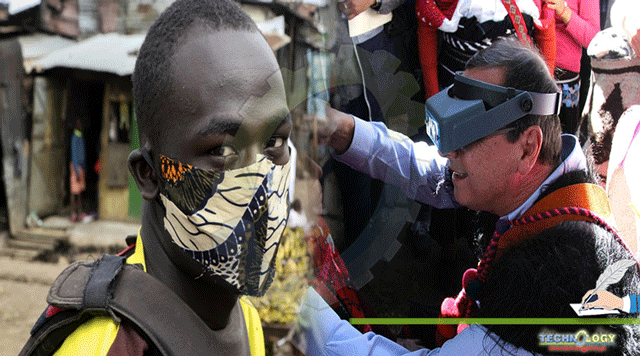The SARS-CoV-2 pandemic of 2019 first started in Wuhan China and spread across the world. Had an unexpected worldwide impact in 2020. However in 1681, Antonie Van Leeuwenhoek of Holland was observed Giardia in his stool. In 1870, Louis Pasteur studied silkworm diseases was firstly published a research-based study on protozoal diseases to its primary control and prevention in South Africa. In 1878, Patrick Manson has discovered the role of mosquitoes in filariasis. This was the first confirmation of vector transmission. In 1880, Laveran a French physician discovered malarial parasites.

Introduction
Parasites are the organisms that cause human infection. They live in host organisms are mainly divided into three categories protozoa, helminths, and ectoparasites. Parasites are a threat that may alter the infectious course of COVID-19 resulting in an influence on parasitic illness, diagnosis, prevention, and elimination activities. The World Health Organization considers many protozoans, including trypanosomiasis and malaria, and unknown and rarely diagnosed species like amoebae. Sometimes a certain free-living organism can infect humans. The fatality rate was up to 90%. Fever is the most prevalent symptom, which is related to the immunological response. However, people who are infected with Acanthamoeba castellanii or Naegleria fowleri have no taste and flavor which is diagnostic of coronavirus infections.
Impact on public health
Neglected tropical diseases caused by ectoparasites, helminths, and protozoa are usually known as parasites. That is widespread in developing and poor countries which presents a major burden on malnourished populations living in unsanitary conditions. Malaria and parasite neglected tropical diseases have the ability to change immune responses to other infectious agents. Co-infections with malaria parasites and SARS CoV-2 could have worse results than mono-infection with virus and ultimately shift the age pattern of severe COVID-19 to younger age groups. Emerging evidence suggests that hyperactivity of immune responses associated with high pro-inflammatory cytokines play a significant role in severe COVID-19 cases and deaths. Factors that may contribute to the mild immune response in some cases of COVID-19 by focusing on immune education parasites sex hormones, chronic diseases, and genetic tolerance.
Ectoparasites
Ectoparasites are parasitic organisms that grow on the outside of their hosts. Most ectoparasites such as bedbugs, scabies, and jiggers .which are extremely endemic in several developing nations. This increase could be due to COVID-19 restrictions which increased the poor sanitary conditions for families who live in close quarters in rural areas. Which encourages Sarcoptes scabies infections. The disease occurs only due to physical contact. A decline in head-lice prevalence from 70% to 43% was seen in 1118 school-aged children during the lockdown. After imposed lockdown and restrictive movement of children outside their homes, there was a significant reduction in the spread of head lice. Here are two examples which include lockdown and social distancing have a significant effect on the control of ectoparasites.
Helminthes
Helminthes infection control is based on a combined effort where focused on effectively reducing parasite-host transmission and promoting public health campaign actions. NTDs caused by helminths are expected to be eradicated or controlled in affected tropical and subtropical regions by 2030. But the global control of NTDs is compromised by the SARS-CoV-2 circulation. Negative COVID-19 may be linked to schistosomiasis infections. The world health organization’s NTD databank provided information on schistosomiasis infections and preventative chemotherapy (PCT) coverage index. COVID-19 active cases were found to be more common in places where schistosomiasis was endemic.
Protozoan
Protozoan infections are a major public health concern. Among vulnerable populations, there were many routes of transmission responsible for the maintenance of different life cycles caused by Giardia. Duodenalis is an Intestinal infection that can be found worldwide. Because gastrointestinal distress is one of the symptoms of COVID-19.it’s important to look for SARS-CoV-2 particles in wastewater, highlighting the need for wastewater-based epidemiological research. From 2011 to 2016, pathogens were responsible for all protozoan outbreaks transmitted through water intake around the world. Because outbreaks are found by clinical tests of symptomatic patients and the majority of infected persons remain undiagnosed, these diseases are often under-reported.
Diagnosis
For parasite diagnosis, molecular methods such as polymerase chain reaction (PCR), reverse transcription (RT)-PCR, nested PCR, loop-mediated isothermal amplification (LAMP). Primer development has focused on a variety of genes, including 18S rRNA, internal transcribed spacer sections, mitochondrial DNA coding for cytochrome, and other enzymes. Quantitative PCR (qPCR)-based detection technologies have enhanced protozoan parasite detection because they are more automated and have a better throughput capacity The majority of new tests are based on this method, and several FDA-approved molecular assays based on multiplex PCR assays for simultaneous detection and identification of common enteric protozoan parasites have recently become available.
Prevention and control
The World Health Organization (WHO) supports an integrated approach to controlling these illnesses which includes access to appropriate sanitation, hygiene education, and preventative treatment. An international travel ban, the transfer to a distance education system, social distancing, gathering and public transportation limitations, and a campaign encouraging everyone to “stay-at-home” were all implemented immediately in Turkey. Increased hand hygiene education for both health care professionals and the general population may result in increased awareness and knowledge of correct preventative measures, as well as a decrease in the number of cases.